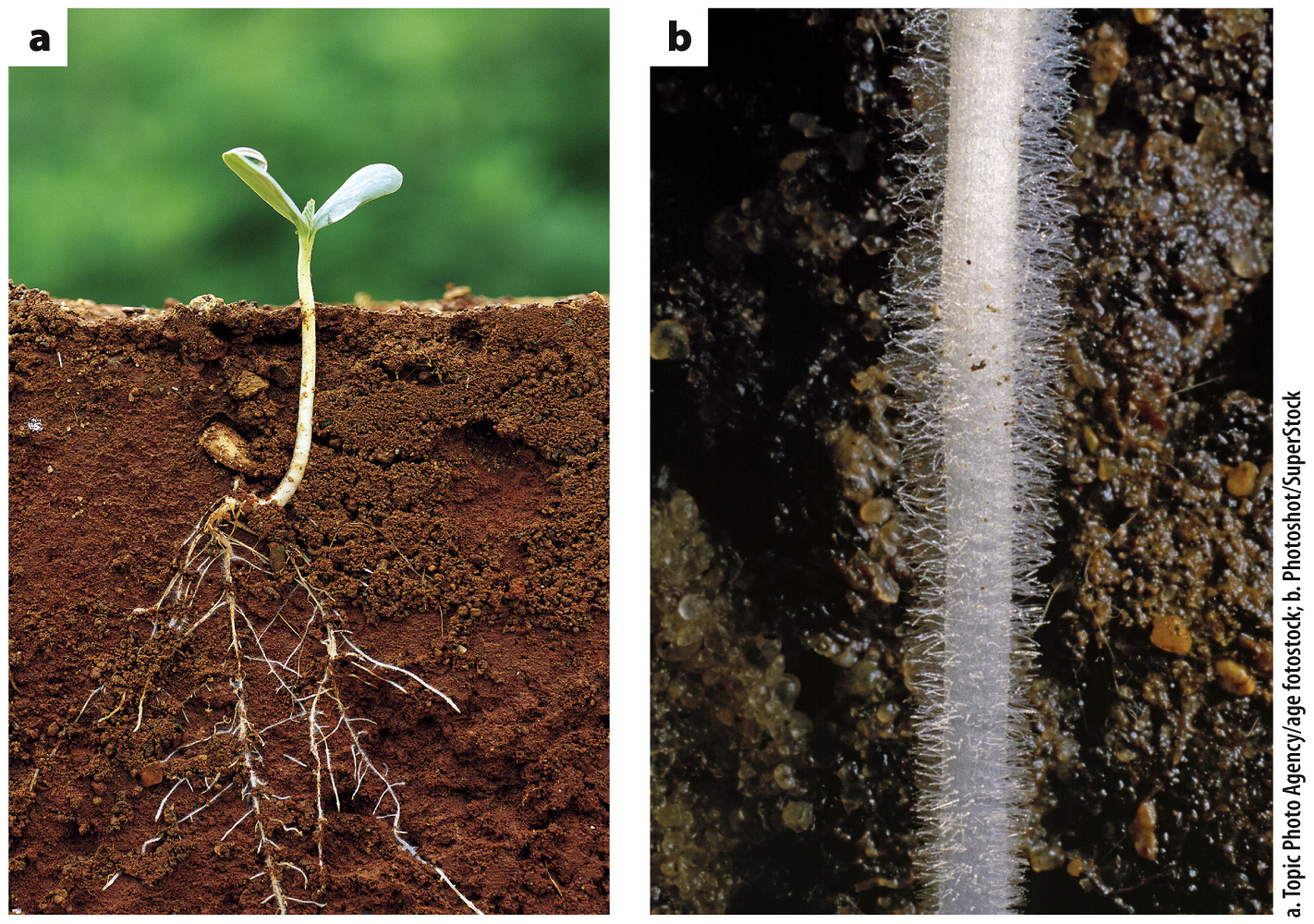29.5 The Root: Uptake of Water and Nutrients From the Soil
As anyone who has dug a hole in a forest or a field can tell you, plants make a lot of roots (Fig. 29.16). Laid end to end, the roots of a single corn plant would extend over 600 km. Why do plants make such an extensive investment belowground? A major reason is that, with the important exception of CO2, everything that a vascular plant needs to build and sustain its body enters through its roots.

So far, we have focused on the importance of roots for obtaining water from the soil to replace water lost to the atmosphere as stomata open to allow CO2 to diffuse into the leaf. However, to carry out photosynthesis, plants must acquire the raw materials needed to produce the enzymes of the Calvin cycle, as well as the components of the photosynthetic electron chain. Without the substantial uptake of mineral nutrients from the soil, plants would lack the ability to photosynthesize at rapid rates. Thus, as vascular plants evolved roots to obtain water from the soil, they evolved mechanisms for acquiring nutrients as well.